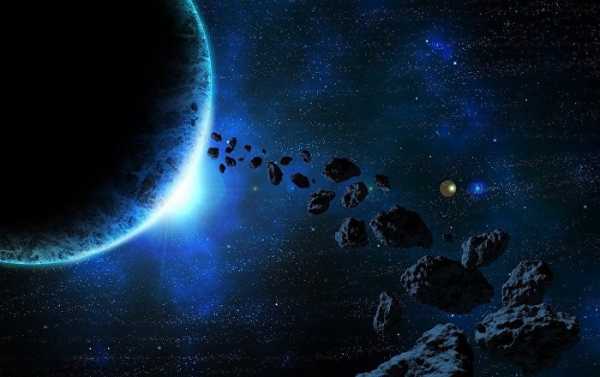
A new study by NASA scientists has proven that sugar molecules – one of the building blocks of life – can form in conditions similar to those in outer space. The find provides further grist to the mill of the argument that life on Earth got some sort of help from above in its formation.
A new paper published on Tuesday by scientists from the National Atmospheric and Space Administration’s (NASA) Ames Research Center in the journal Nature Communications proves that a sugar molecule key to the formation of life can form in the extremely cold and radiation-rich conditions of outer space.
The scientists recreated the conditions of space by cooling aluminum substrate to —440 degrees Fahrenheit, close to absolute zero, and placing it in a vacuum chamber, into which they pumped a mixture of water and methanol gas, similar to that found in the interstellar medium. They then bathed the sample in ultraviolet light to simulate stellar radiation.
At first, ice built up on the sample, but the UV light melted it. But what scientists found after was the real prize: a small amount of 2-deoxyribose — the “D” in “DNA” — had formed, along with several other kinds of sugar molecules, on the surface of the aluminum substrate.
“For more than two decades we’ve asked ourselves if the chemistry we find in space can make the kinds of compounds essential to life. So far, we haven’t picked a single broad set of molecules that can’t be produced,” said Scott Sandford, a senior scientist in the Ames astrochemistry lab and an author on the new paper.
“The universe is an organic chemist,” said Sandford. “It has big beakers and lots of time — and the result is a lot of organic material, some of which is useful to life.”
The scientists then went looking for those sugar compounds in samples from carbonaceous meteorites. While they didn’t find 2-deoxyribose in their samples, they did find other sugars, meaning that with a large sample size, they could find the elusive key ingredient for life.
The find only further encourages the theory that life on Earth either got help from an interstellar object plummeting down to the planet, delivering some key chemicals, or was transported wholesale from another world, blasted off by an impact and then unwittingly winding up here.
In late October, a trio of Harvard scientists — including one who’s attracted no shortage of ire as of late for suggesting the interstellar object ‘Oumuamua might be a spacecraft — published a paper describing how life might have been transplanted here by a process called panspermia, even across interstellar distances.
The basic idea of panspermia is that an impactor, like a comet or asteroid, crashes into world where life exists, blasting pieces of rock into space that carry the microbes and organic material to some other planet, where they eventually crash down when their rock becomes a meteor. If they survive, the microbes colonize the new world.
While it’s somewhat accepted that panspermia could transplant life from, say, Mars to Earth, life traveling longer distances across the unprotected interstellar medium seems less likely. Ames scientists took issue with the Harvard scientists’ suggestion, criticizing it as improbable that the process could work between solar systems.
“If the journey took millions of years, then that life would die, and it doesn’t matter if it is Earth life or non-Earth life,” Rocco Mancinelli, a senior research scientist at the Ames Research Center, told NBC at the time. “Why? Because it would be destroyed by cosmic radiation. And even if it could survive that, the radiation given off by the mineral in the rock itself would destroy it.”
Meanwhile, the US space agency’s OSIRIS-REx [Origins, Spectral Interpretation, Resource Identification, Security-Regolith Explorer] spacecraft just arrived at the asteroid Bennu earlier this month, an odd rock that NASA scientists think might give them an idea of what the conditions of early Earth were like. OSIRIS-REx will collect samples from Bennu’s surface and ship them to Earth after measuring the asteroid to see if it poses a threat to the planet. NASA’s Jet Propulsion Laboratory gives the 110-mile-wide asteroid a cumulative 1-in-2,700 chance of impacting Earth between the years 2175 and 2199.
On December 10, NASA announced OSIRIS-REx had found evidence of water clay on Bennu.
“Data obtained from the spacecraft’s two spectrometers… reveal the presence of molecules that contain oxygen and hydrogen atoms bonded together, known as ‘hydroxyls,'” the space agency said in a press release, Sputnik reported. “The [NASA] team suspects that these hydroxyl groups exist globally across the asteroid in water-bearing clay minerals, meaning that at some point, Bennu’s rocky material interacted with water.”
Sourse: sputniknews.com






